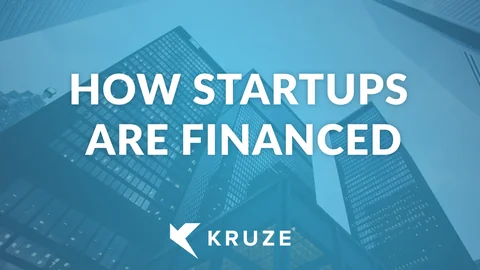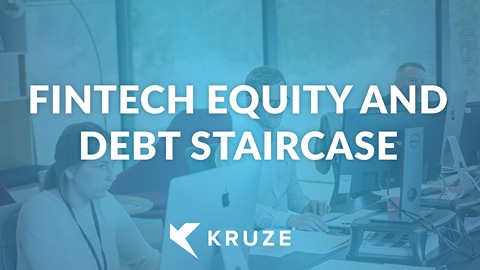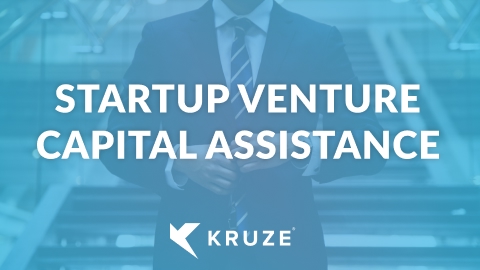
Startups are unique to your traditional small business in that they tend to be technology-based, whether it’s biotech, medtech, software, or hardware. That technology base tends to require capital investment. This article will explore the 8 ways startups are financed. We’ll focus on the typical ways that Silicon Valley-style startups are financed, and so won’t include the rather traditional methods of using personal savings, bank debt, or credit card loans.
8 Ways Startups Get Financing:
- Bootstrapping: taking the money your customers give you to fund the business
- Friends & Family: people who BELIEVE in you and your idea!
- Use a convertible note or a safe note
- Friends & Family Investment: $25k to millions of dollars
- Angel
- Will typically pay more than friends or family
- About $5M valuation
- Pre-Seed & Seed
- Invest in startups and collect management fees
- Price Rounds, Convertible Notes, Safe Notes
- Pre-seed Investment: $500k-$1M
- Seed Investment: $3M investment
- Pre-Seed & Seed Investors will help promote other investments to fill the rest of the round
- Series A
- 10-20 Big Marquee Series A Funds
- Loads of Perks! Social Network, Recruiting Team
- Series A Investments: $5-10M
- Always preferred stock
- Series B
- Series B Investments: $25-50M
- The margin of error for Series B investor is a lot smaller, but the investor has a lot more information to their advantage
- Always preferred stock
- Venture Debt
- A loan that needs to be paid back
- Founders use this to extend their runway and hit milestones that allow you to raise the next round
- Series C
- Make it or break it moment!
- Always preferred stock
How Startups are Financed
Let’s dig into the top 8 ways startups are financed, bootstrapping, friends and family funding, angel investments, seed financing, Series A, B & C venture capital rounds, and venture debt.
Bootstrapping
So usually, the first stage of financing a startup is some combination of bootstrapping and or friends and family rounds. This is when you’re first getting the idea working, and it may just be you doing the startup. Maybe you have a co-founder. Maybe there’s a couple of people on the team. But at this stage, if you can find a paying customer or a couple of paying customers, you can bootstrap it for a little while. Bootstrapping just means you’re taking the money that your customers give you and you’re living off of it. Bootstrapping is what may fund payroll if you even have it at this stage.
I remember in the early days of Kruze Consulting, Vanessa and I were getting paid $25,000 a year for a couple of years. Bootstrapping is very, very hard.
The natural next step to bootstrapping is receiving investments from family and friends.
Friends and Family Investments
Another way a startup can raise capital is through the support of friends and family. Friends and family love and care about you. They think what you’re doing is probably fantastic, but they’re not expert investors. So I always like to remind founders to try to give them a good deal.
Sometimes founders get caught up in dilution and thinking that they have to maximize everything. But you don’t want to try to maximize valuation at this stage because odds are your friends and family will sign up for anything you ask them for.
You want to be very reasonable about this. Also, the rounds can be anywhere from $25K up to a million or $2 million. It just depends on how connected you are, how wealthy you and your friends and family are, as well as the risk appetite of your friends and family.
Typical Friends and Family Startup Financing vehicle: SAFE Notes
These deals are typically done in either a SAFE note or convertible debt. These are the instruments of choice for friends and family, for angels, for seed rounds because they’re easy to document. They typically have a cap like a valuation kind of cap on them. Essentially it functions like a priced round, but it’s to be converted at a later date. Some of the basics around a convertible debt cap or SAFE note cap are usually good for around 24 months for convertible debt.
SAFE notes are in perpetuity. Again the cap for friends and family might be a $5 million cap, or even a $3 million cap.
Say you take $300,000 at a $3 million cap - you’re essentially selling 10% of the company. The incentive for the friends and family to come in early is that they’re getting into a company at a $3 million valuation that can be worth a lot more later.
Angel Investors - Core startup financing tool
Angel investors are typically people who have done very well in their careers. Professional angel investors are more experienced. They’re good at underwriting the market’s potential, the possibility of the company, where this could go, and maybe competitors. Angel investors are typically willing to pay up a little bit more than friends and family.
As we see, the typical kind of angel round may be at a $5 million valuation. They can typically write much more extensive checks where friends and family might be putting in $10K or $20K. Professional angels are putting in 100, 200, $500,000, maybe even a million dollars.
It is important to note that no one wants to invest in friends and family or an angel round to have the company get sold for $5 million or $10 million.
Investors, especially the professional angels, want to know that one year from now you will be building something of value with the capital they gave you.
One thing that’s true in the whole venture capital ecosystem, which includes angels, is that everyone wants to put their money in, get their ownership percentage, and then have other people fund the company as it progresses.
Because most of the early stages, like the super early angels and friends and family, can’t write another check.
When you start getting into institutional investors like a seed fund, the next step is a pre-seed fund. They have institutional capital, and some people go right to pre-seed or seed.
Pre-Seed Funds
Pre-seed and seeds are the next step. They typically range anywhere from 10 to $50 million institutional funds.
They have general partners invest in startups, take meetings, and invest. They collect management fees, which helps pay their salary. The angel funds angels don’t typically collect management fees. They’re just in it for the upside.
The seed, pre-seed, and series A funds are usually collecting a 2% to 3% management fee on their funds. They also get rewarded in what’s called carry, which is just upside profit sharing.
When they’ve invested their funds, say they supported a $20 million fund, and they start getting distributions from the winners, as soon as they cross that $20 million fund amount, they start participating at something like 20 to 30% of the profits. So it’s an excellent deal for the general partners, the people who run the fund. Suppose they can invest in winners because all of a sudden, they’re getting massive upside.
Think about Facebook or Uber or some of the vast IPO’s and successful companies. If you invest in them as a seed-stage fund and you had a 1000X return on your investment, you’re getting 20% or 30% on that upside. It’s powerful.
Seed-stage investors, and pre-seed, bring something of value in that their brands are compelling. When they sign a term sheet and price around, they typically do price rounds. Sometimes they’ll do convertible notes or SAFE notes, but they usually like to do price rounds. Their brand helps you kind of fill that round-up. So maybe a typical seed round would be like a $3 million investment.
A pre-seed might be $500K to a million dollars, whatever it is, typically the lead investor of that seed or pre-seed fund will sign up for half to two-thirds maybe three-quarters of that amount. They’ll ask you to go around and fill out the round.
It is great to have them on board. They also are good at helping professionalize the company. They will tell you that you should probably work with good law, accounting firms, and a tax firms. We get a lot of referrals from these seed funds. They want us to help them clean up the financials of companies in which they have invested in. They want us to make sure all their tax compliance is done
Series A
The next step, which I mentioned earlier, is series A investors. Series A are the big dogs of Silicon Valley, New York, Austin, Los Angeles, and startup markets. These are the famous funds you’ve heard of like Sequoia, Benchmark, Andreessen Horowitz, Founders Fund.
With them, you get many perks. Even just outside of the money, you get access to their recruiting and operations teams. You get best practices. They all usually have a social network that they connect people on.
And the capital is super important—the series A funds are typically doing five to $10 million series As. And again, they’re in the same way the seed funds are helping professionalize you.
The bar is high. You need to have locked-in financials. You need to have a locked-in roadmap for product development. You have to have clear expectations of when you’re going to get customers, and they will hold you accountable. You’ll typically raise 18 months of cash, maybe 24 months.
The series A investors will also be great at helping you set those milestones that are going to attract series B investors.
Series B
Series B investors typically follow the series A investors very quickly. I always joke that series A investors have the speed dial. Series B investors usually write more extensive checks.
So if a series A is five to $10 million, a series B might be 15 to 25. Even these days the market is very frothy. So we see even series Bs at $50 million. It’s pretty crazy out there. And the Series B investors tend to be a little bit more financially oriented, less about the big vision, and falling in love with the entrepreneur and where the entrepreneur’s going. Only because the dollar amounts are getting very real at that stage, and they need the company to perform.
If you’re a series A investor and have a couple of five or $10 million deals blow up, but you have one that’s huge, you do okay.
But suppose you’re a series B investor and putting in 25 or $50 million. In that case, those blow ups hurt badly, mainly because you’re typically paying a much higher valuation than the series A investor. And so your upside isn’t relatively as high. Where a series A investor might make 20 times their money on a good outcome. A series B investor might only make five times or eight times their money. So, as a series B investor, your margin of error is a lot thinner. However, you do have a lot more information at the series B point. You can see the company’s always going to have revenue before you’re doing a series B. You’re going to see the growth. You’re going to see the traction, having seen the product gets developed. And so you have a lot of information advantages there.
Venture Debt
The next step, somewhere in series A or series B a lot of startups will do, is venture debt which is a less dilutive form of capital a loan that needs to be paid back to a startup.
Many people will say, what bank or fund would ever loan money to a money-losing company?
Well, there’s a whole segment of lenders that lend money to startups because they know they’re building something valuable that could be sold if things go wrong. They also get their money out first, even ahead of the liquidation preference. So it’s a little bit less risky than just pure venture capital. They ask for some interest and fees but they also ask for warrant coverage which gives them some equity in the company.
Now it’s significantly less. The series A and series B investors are always going to want to own 20% of the company, at least.
Whereas the venture lender will hold something like a quarter-point, maybe 1% of the company. Venture debt is just basically used to extend your runway and hit milestones that allow you to raise that next round. So series A, series B, a lot of companies are taking venture debt. That brings us to series C, and we’re starting to get into the late stage of the startup ecosystem.
Series C
Series C is a make-or-break-it moment for most startups. You’ve got some traction because you wouldn’t have been able to get a series B without it, but now you need to scale and build something super exciting to attract capital.
Series C investors investing in preferred, too, are going to be super financially oriented. They’re going to start thinking about - time to exit, IPO, what your revenue multiples will be, and what the company’s valuation can be in the future.
Series C investors write even more extensive checks. What series C investors are doing right now is that they’re there to help you with some strategies. They’re good at introducing you to partners, to customers, and things like that.
But again, they’re kind of less hands-on than series A, or series B investors.
I should point out that when all these venture capital funds are putting money in and putting money in preferred, they typically get pro-rata rights, which allows them to protect their investment ownership stake.
So if they own 20%, they get to participate in every round that’s coming along in the future and put in enough money to protect their 20% ownership. So you can see pretty quickly that the startup founder is experiencing the dilution, and they can’t ever get that back.
So as a startup founder, you never really get to increase your ownership. You’re sort of losing ownership over time. With all this capital, you can build a massive company, have a nice exit, and make a ton of cash. But many founders own 5% up to 20, 25% at IPO.
You want to try to keep that ownership as high as possible within reason. But of course, if you’re in a capital-intensive business, you’re going to have to take the capital, and you’re going to have to suffer some dilution.
Just know the investors will always protect their pro-rata or ownership and do their pro-rata in a good company that’s executing.
Series D and F
Finally, series D, series F, are super financially driven investors. They’re going to look at your customer acquisition cost, your LTV, and say if I give this company a dollar, they’re going to turn it into five. This is the kind of company I want to invest in. I think I can do an IPO in a year or two years, or maybe there’s a buyout in a year or two years. These folks care about the spreadsheet and what the numbers say, and the time to exit. They’re equally helpful. They’ll help you with customers and things like that. Don’t get it wrong. They are financially driven people.
So that’s the flow of startup funding. You’re going to start with friends and family and bootstrapping and then go to angels and pre-seed, and then seed funds.
And those are often done in convertible debt or SAFE notes and then maybe preferred at the seed stage level. Then you get preferred to series A. You will have all the liquidation preferences and other rights that investors have. Eventually, you get to the considerable dollars at series C series D, even later series F, and hopefully, your company does an IPO. You have built something lasting, something that changes the world. Eventually, you become an investor, an angel investor, or a venture capitalist, and the system lives on.
Typical small business startup financing sources
If you are more interested in how more “typical” small businesses are financed, we’d recommend some research done by the Kauffman Foundation. Basically, this chart lays out how more typical startups are financed.
| Major Categories | Amount | Share |
|---|---|---|
| Bank and Other Loans | 38,059 | 34.90% |
| Personal Savings | 32,658 | 30.00% |
| Friends and Family | 6,910 | 6.30% |
| Credit Cards | 6,756 | 6.20% |
| Angel Investors | 6,350 | 5,80% |
| Venture Capital | 4.804 | 4.40% |
| Government Related | 2,129 | 2.00% |
| Total | 109,016 | 100.00% |
You can read more detail in this article, but remember - regular small businesses have rather different sources of funding vs. what happens to the software, internet, hardware, and biotech companies that are coming out of Silicon Valley.
So I hope that helps explain how startups are financed.















